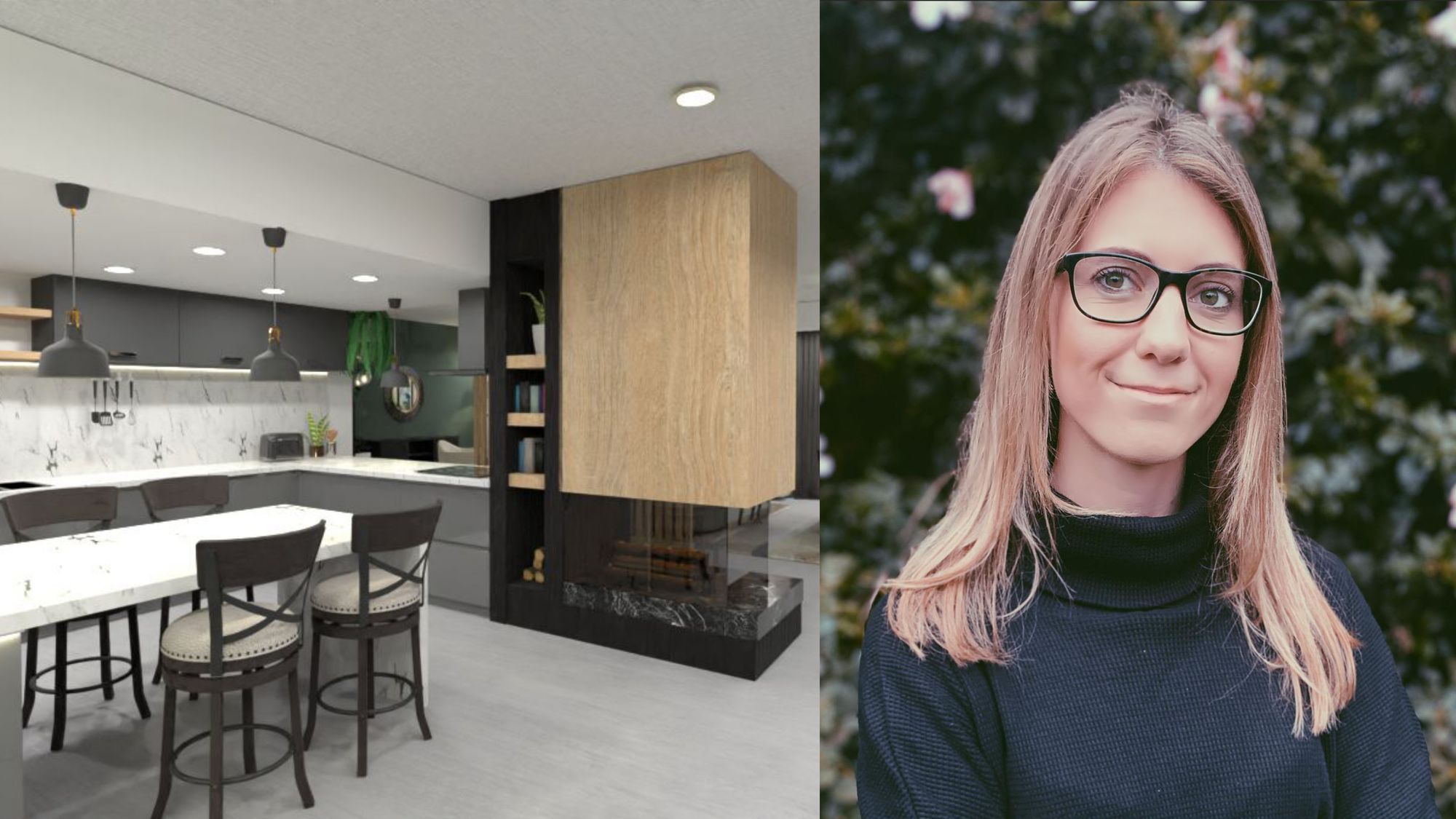5 Tips for Decorating Your Home Like a Pro Designer
We chat with Alexandra Cooper, professional interior designer, who gives us her top five tips when designing any room from scratch.

Tackling an interior design project for your home, when you lack professional training and experience, can be complicated. Maybe you want to redecorate your living room, or your kitchen needs a facelift, but you're having a hard time knowing where to start. Whatever the project, there are a series of design notions that you can apply in your interiors, to achieve more comfortable, functional and welcoming spaces.
Today we speak with Alexandra Cooper, a member of the Planner 5D design team, who will discover the keys to starting any design project on the right foot. So, if you would like to decorate your house like a professional interior designer, don't miss the following tips.
Meet the designer Alexandra
Based in Madrid but of Uruguayan origins, Alexandra Cooper has almost a decade of experience as an architect and interior designer. For a few months now, she, moreover, she shares her savoir-faire and knowledge with the Planner 5D design team.

In her projects, Alexandra exploits her love for color and nature, which she introduces into her designs through plants and vibrant details. Natural materials, organic details and modern finishes are also an important part of her creations, which you can discover in her extensive profile in the Planner 5D Gallery.


Each space has its function
To begin a successful design project, it is important to understand how each space will be used. Perhaps you need a formal seating area to entertain guests, or a more relaxed seating area. All of this will determine the choice of furniture and distribution of your designs. In Alexandra's words: “Before starting to design, you must understand the purpose of the space and the activities you are going to carry out in it.”


Images of R ARCHITECTURE and roam in color on Unsplash
“Define the purpose and function of the space in order to create an appropriate design and layout plan. Consider who the main users of each room will be and what needs it must satisfy. And, based on this, make a scheme or plan of the space to organize the elements in a coherent and efficient way. Consider the circulation, the distribution of furniture and the location of access points (doors and windows) to achieve optimal fluidity in each environment.” All of this, without a doubt, will determine the functionality and comfort of each space in your home.
Your color palette
There are those who love neutral tones and monochromatic interiors, but Alexandra opts for color. And (in addition to providing personality and visual appeal) color can have a great impact on your well-being: “Warm colors can provide energy and warmth, while cold tones transmit tranquility. Don’t forget to consider the psychology of color and how it affects mood.”



Images by Spacejoy and Kam Idris, on Unsplash
Alexandra Cooper recommends choosing an appropriate color palette for each room. In her own words: “Color selection is crucial to interior design. She opts for a harmonious palette that reflects the desired style and atmosphere. "Both the function of the space, the amount of light and personal preferences are very important aspects to consider when choosing the colors and proportions that should be used in each room." Alexandra's advice when choosing colors for an interior in a balanced way is to use the “60-30-10 rule” (bet on a dominant color for 60% of the room, another complementary tone for 30%, while the remaining 10% is covered with a contrasting tone).
Lighting is essential
It may seem like a lie, but the lighting in a room has a great impact on its functionality and appearance. Thus, when designing each room in your home, “take into account the natural and artificial lighting of the space. “Proper lighting is essential to highlight the beauty of the space and create the right atmosphere.”


Images by Denys Striyeshyn and Don Kaveen, on Unsplash
In aesthetic terms, it is important to combine light sources at different heights and in different environments. Alexandra recommends “combining general lighting with focused and decorative light sources to generate a feeling of spaciousness and comfort. Take advantage of natural light whenever possible and supplement it with artificial lighting when necessary.” In addition, there are small tricks to maximize the effect of natural light, from including mirrors to using light colors on the walls.

But, on the other hand, lighting has a great impact on practical aspects: “For bathrooms and kitchens, for example, neutral, clear and intense light is recommended (between 3,800 and 4,000 degrees Kelvin) since in these spaces more is needed. lighting to perform tasks such as cooking, shaving, putting on makeup, etc. On the other hand, the light I would recommend for a living room or bedroom would be rather warm, below 3,500 K to create an optimal space for relaxation and leisure.”
Storage makes the difference
Many times, when designing our homes, we tend to think only about the aesthetic (or those other details that we find most exciting) and forget essential aspects to create truly functional interiors. For Alexandra, one of those aspects is storage: “Do not underestimate the importance of storage as it is essential to maintain order and organization in any space. Consider creative storage options, such as shelving, furniture with hidden compartments, baskets, dual-purpose furniture, or closet organization systems. A space free of clutter promotes a feeling of calm and comfort.”


Images of Sarah Dorweiler and you on Unsplash
Today, there are countless storage solutions perfect for all types of interiors (even the smallest homes), such as folding canapes, sofas with hidden storage space, ottomans, and much more.
Uniquely personal home
One of the goals of every interior designer is to create spaces that reflect the tastes and personality of their clients. And in decoration, not everything is functionality. Therefore, when decorating your own home, it is important to include elements that reflect your personality, tastes, and interests: from works of art to decorations or souvenirs from trips and important events.


Images of Jakob Owens and Toa Heftiba on Unsplash
Alexandra recommends doing it in the following way: “Decorative details can enhance the personality of the space and make it unique. Incorporate elements that reflect your personal interests and tastes, such as artwork, photographs, pillows, rugs, etc.”
But everything has a limit, if you include too many decorations your home can look cluttered or messy, and even lose functionality (it becomes difficult to clean, and uncomfortable to navigate). So “avoid overloading the space with too many objects.”
Your home in Planner 5D
From lighting to interior layout, now that you know these basic notions of interior design, you can put them into practice in the design of your home. A good solution to create 3D designs and 2D plans for your projects is to use Planner 5D. This interior design software will help you plan any decoration project down to the smallest detail, preventing you from buying inappropriate pieces or making mistakes in your designs.
